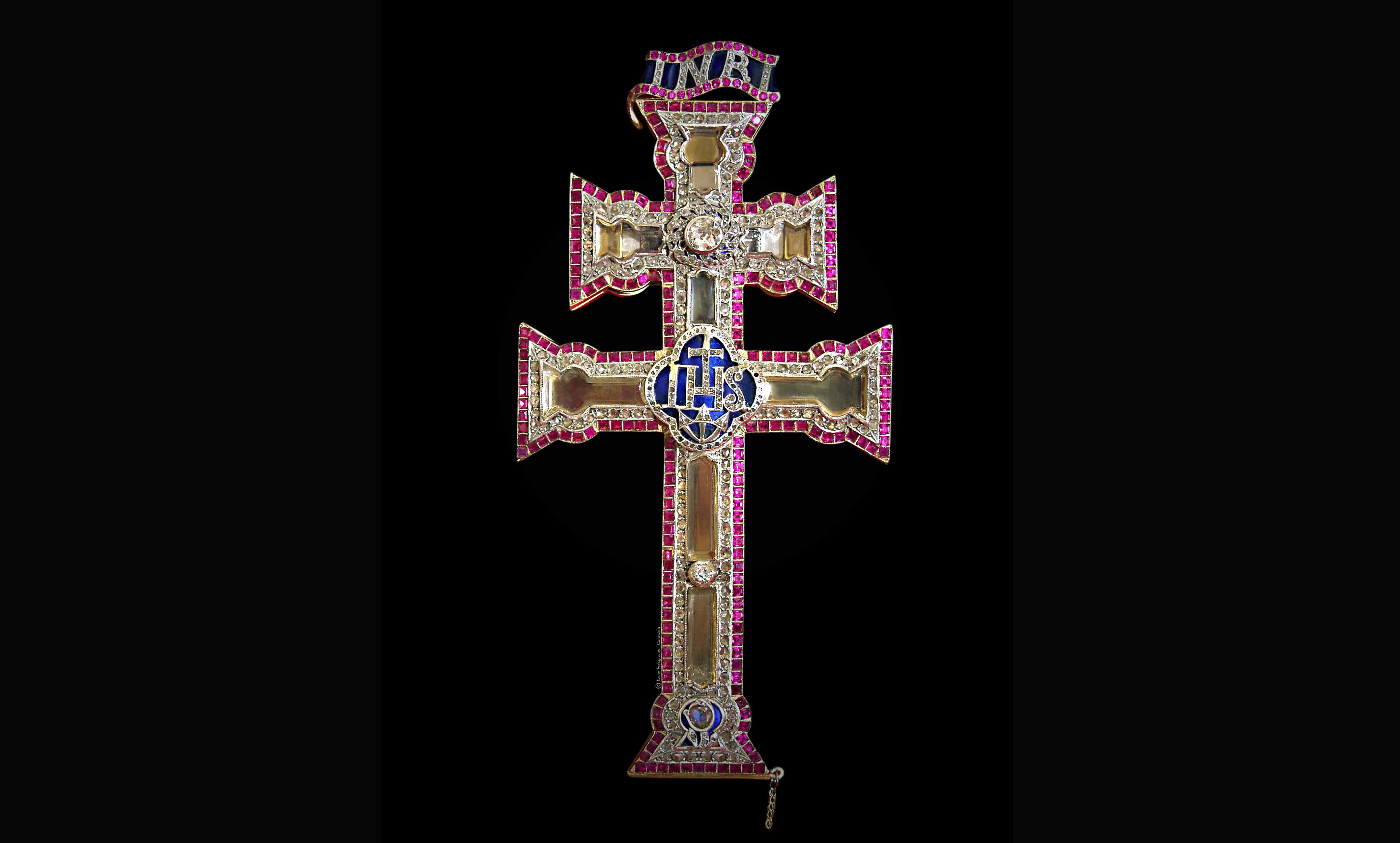2 minutos de lectura
What makes the Caravaca Cross so special
Por: Turismo Región de Murcia en 7/16/24 11:52 AM

The Christian religion is characterized by its rich iconography, where various visual symbols convey profound spiritual meanings. Among all icons, the cross is perhaps the most recognized, representing the crucifixion and resurrection of Jesus Christ. While we are all familiar with the classic form of the cross, the Cross of Caravaca presents a unique and meaningful design. What makes this cross so special, and why does it have such a distinctive shape? In this article, we will tell you everything:
The story dates back to the 13th century when the Iberian Peninsula was still under Muslim rule. Legend has it that on May 3, 1232, a priest named Ginés Pérez ventured out of Christian territory to preach the Gospel to non-believers. For this act, he was arrested and brought before Zayd Abu Zayd, Almohad lord of Caravaca and Valencia. Zayd Abu Zayd asked him about his practice, and impressed by his bravery, ordered him to perform a mass in his presence.
The priest obeyed and began the celebration, but soon realized he did not have a cross, so he decided to pause the Holy celebration. However, at that very moment, a great miracle occurred that would later lead to Zayd’s conversion to Christianity: the descent of two angels with the Cross of Caravaca, which is why many representations of it are accompanied by two angels, one on each side, symbolizing the moment of descent.

Over time, the Cross was protected by the Templars and their successors until February 14, 1934, when the chaplain responsible for protecting it broke the established rules. Tradition held that the chaplain should move the Vera Cruz at dusk, coinciding with the call to prayer, from the main altar of the Sanctuary to an oratory in his chamber. Each morning, before the half-past-eight mass, the cross was returned to the temple. However, that evening, the chaplain did not follow the custom and left the relic in the Sanctuary, where supposed thieves were able to steal it along with its reliquary case.
Faced with the sadness of the people and their sense of abandonment, shortly after the end of the Spanish Civil War, the bishop of the Diocese of Cartagena arranged for Pope Pius XII to grant Caravaca two small splinters of the "Lignum Crucis" of Saint Helena, mother of Emperor Constantine.
Later, Saint John Paul II recognized the sanctity of the city of Caravaca de la Cruz, making it the fifth city in the world to obtain perpetual jubilee, which is celebrated every seven years.
Today, the Cross of Caravaca is a commonly given gift to demonstrate love. So, if you are in love and visit Caravaca, don’t forget to acquire a reproduction of the Cross to give to that special person.
Museums to visit in Cravaca de la Cruz
Caravaca de la Cruz is a historical and cultural hub that captivates those who explore its corners....
Did you know that Caravaca de la Cruz holds evidence of the meteorite that wiped out the dinosaurs?
The Barranco del Gredero, located in Caravaca de la Cruz, is not just a natural spot to visit. It...


